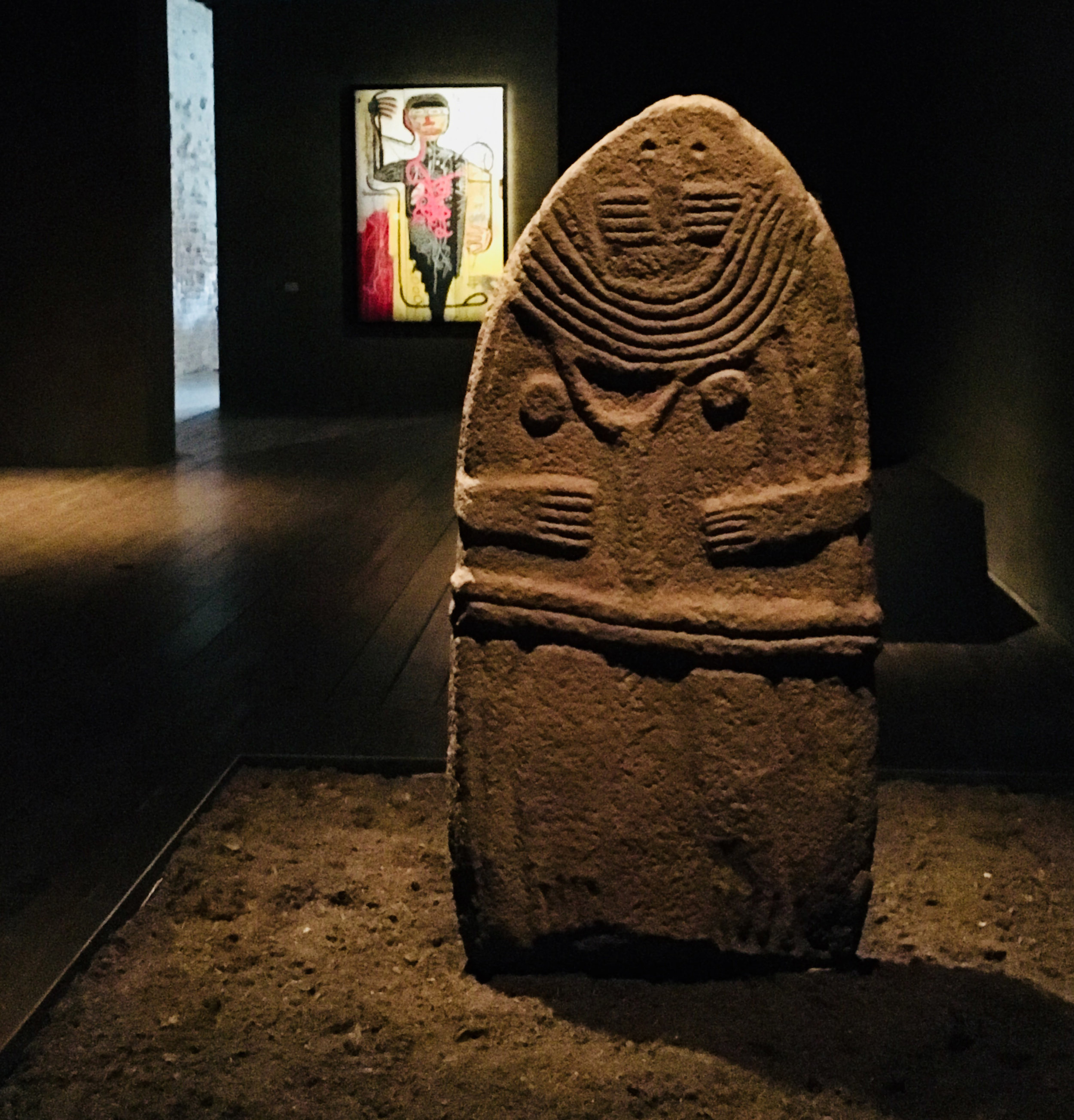When my husband, Blase, and I were in Italy a month ago, we went to the Fortuny Palazzo in Venice to see the exhibit, Intuition – five floors of paintings, sculpture, and objects reflecting the theme. The exhibit began in a darkened room. Jean-Michel Basquiat’s painting, Versus Medici, 1982, hung on one end wall. Occupying his monumental canvas was a figure painted with exuberant colors, the body compressed as if the painter had to bend the limbs to fit all of it into the frame. Having just been to the Uffizi Gallery in Florence, it reminded me of the trio of great Pre-Renaissance Madonna paintings by Cimabue, Duccio, and Giotto. However, instead of angels, alchemical symbols and his own unique graffiti glyphs surrounded Basquiat’s figure.
Like a priest facing their congregation, Basquiat's figure, one arm raised, gazed over the room. In this crypt-like space were raised beds of dark, rich earth. Planted in the soil were Neolithic sculptures — male and female figures found in Northern Italy and Southern France. These sculptures, standing four to five feet high, were astonishing in their purity and simplicity.
'Dame de Saint-Sernin', Statue-Menhir of a Female Figure, Saint-Sernin,Aveyron, Southern France, Late 4th-3rd millennium BC, Photo:LH
We didn’t want to leave the room, but what followed was equally inspiring. Juxtapositions of Anish Kapoor, Man Ray, Marina Abramovic, Odilon Redon, Ana Mendieta, Giacometti, and always in the background, informing the mystery of great art, an infusion of intuition.
Where does art come from? How do we know its truth? How can centuries of time separate two objects and yet we recognize that two similar psyches conceived them? The answers lie in our intuition.
Today, we are programmed by a glut of advertising. There is very little time in a day when the inputs of the contemporary world don’t influence us. As artists, and I use this word in its broadest context, as creative beings, it takes time away from these stimuli to hear the inner voice of intuition. And then, it’s not enough to hear a whisper. We need to remain with it, to be at the listen, if we are to have this ancient wisdom manifest in our lives.
Recently I heard a Zen teacher, Hojin Kimmel Sensei, give a talk in which she mentioned three words that have helped on her spiritual path — perseverance, wonder, and kindness. Actually “being kindness,” she explained, “not loving-kindness.” When I heard her speak these words, I knew they would also hold meaning for me. I also realized that they were good tools for accessing one’s intuition.
We need to persevere: we must be strong and dedicated in our intention. We need wonder — curiosity and openness. We can’t think we already know the answer. It is important to open our hearts to the wonder that exists at each moment. And we need kindness: in this clashing world of battering egos, we can find softness and solace when we act kindly toward everything we encounter — the earth, other beings, and ourselves.
These three directives are like the marble sculptor having a hammer, chisel, and polishing tool. I now, in turn, offer them to you. May they help you get through the density of the holiday season! And may intuition be your friend as you travel from the darkness into the light — whether she arrives in the style of a Renaissance Madonna, a Basquiat painting, or books made of bread, sculpted by the Italian artist, Maria Lai (1919-2013).
Enciclopedia Pane / Bread in 17 parts, Collection Archivio Maria Lai, Photo:LH

